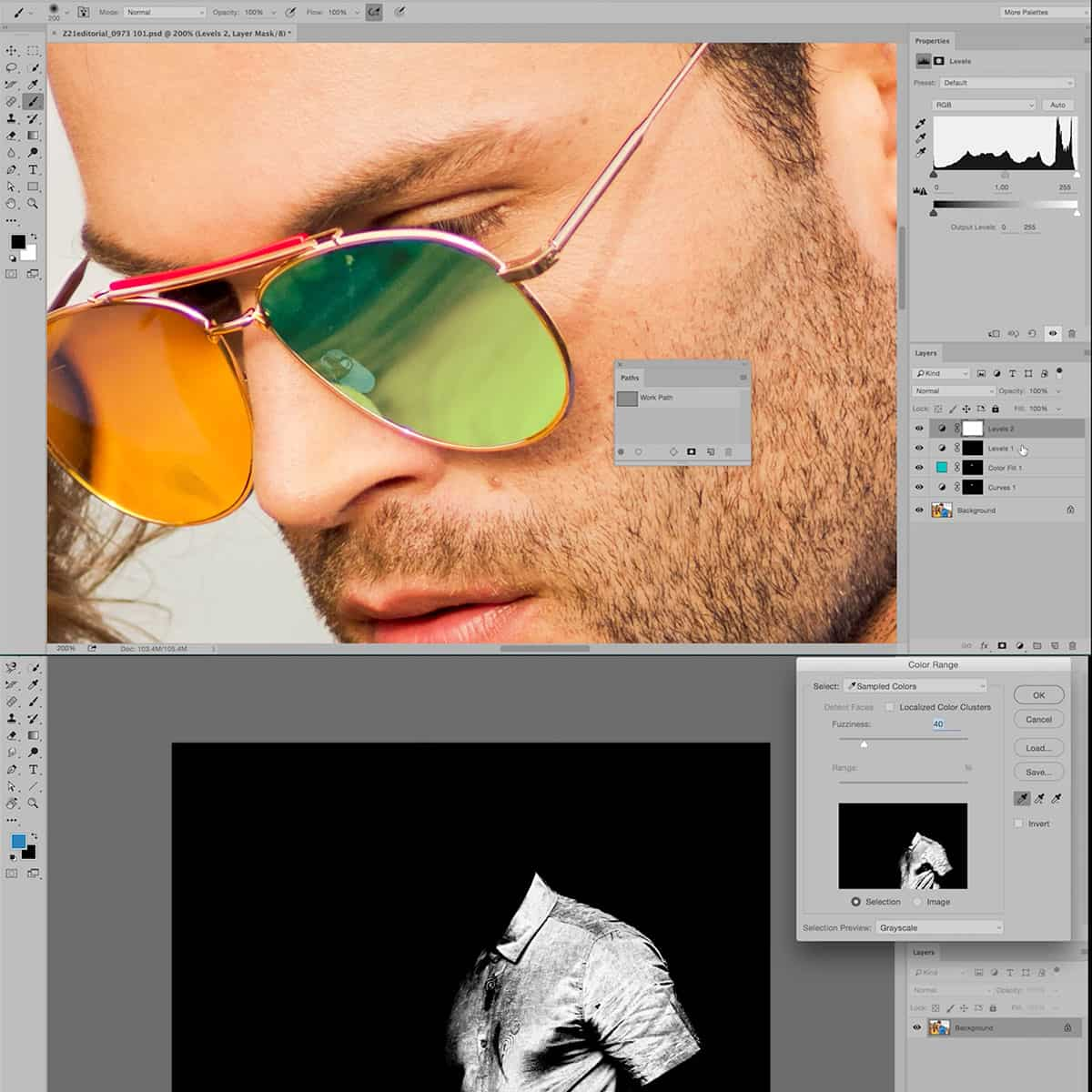ICC Profiles: Ensuring Color Accuracy in Photography - A Comprehensive Guide
In the world of photography, ensuring color accuracy is crucial in delivering high-quality images. One of the key components in achieving this is through the use of ICC profiles. These profiles play a vital role in color management by characterizing the color behavior of input and output devices, such as cameras, monitors, and printers, and according to the standards set by the International Color Consortium (ICC).
To fully appreciate the importance of ICC profiles, it's essential to understand the concept of color spaces. These spaces define the range of colors that a particular device can display or print, and ICC profiles provide the necessary data for accurate color conversion between different devices within your photography workflow.
Implementing ICC profiles in your photography workflow ensures that the intended colors are accurately reproduced, regardless of the viewing or printing device being used. By employing these profiles, photographers can overcome common color mismatch issues and achieve consistent results across various platforms and devices.
Key Takeaways
- ICC profiles play a key role in color management by characterizing device color behavior.
- Understanding color spaces and ICC profiles ensures accurate color conversion in your workflow.
- Utilizing ICC profiles helps overcome color mismatch issues for consistent results across devices.
Understanding ICC Profiles and Color Spaces
Role of ICC in Color Management
In the world of photography, ensuring color accuracy is crucial. The International Color Consortium (ICC) plays a significant role in this process. It's responsible for standardizing color management systems, allowing devices to accurately represent colors throughout the whole workflow1.
ICC profiles are an essential component of these systems. They contain the necessary color data to characterize an input or output device or a color space. Utilizing ICC profiles secures consistent and predictable color transformations across different devices2.
ICC Profiles and Color Spaces Explained
A color space, such as sRGB or Adobe RGB, defines a range of colors that can be represented by a device3. Every device, like a camera or monitor, has its inherent color space that affects how it captures and displays colors4. An ICC profile characterizes those color spaces, ensuring the accurate conversion between them5.
For instance, when editing a photo in Photoshop, the software uses an RGB working space which is device independent. With the help of an ICC profile, colors from a digital camera can be translated into that working space6.
In summary, understanding the role of ICC profiles and their connection to color spaces is vital for accurate color management in photography. By properly utilizing these tools, photographers can ensure their artwork maintains color accuracy across different devices and outputs.
Configuring ICC Profiles in Photography Workflow
Settings in Photoshop and Lightroom
When working with ICC profiles in programs like Photoshop and Lightroom, it's important to configure the color settings accurately. First, choose the correct working space for your project. In most cases, using Adobe RGB or ProPhoto RGB is recommended for preserving the widest color gamut.
When opening images, ensure that they have an embedded color profile. If there's no profile, assign one that matches the working space in your application. When saving, make sure to include the embedded color profile to maintain color consistency across different devices.
Using Hardware: Monitors and Printers
Monitor calibration is crucial for color accuracy in a photographer's workflow. A properly calibrated monitor can display colors more accurately, making it easier to edit and produce high-quality images. There are several tools available to calibrate your monitor, such as hardware colorimeters and software-based calibration utilities. Always follow the manufacturer's guidelines for calibrating your monitor.
For printers, ensure that you have the correct ICC profile installed for your specific printer and paper combination. This profile tells the printer how to interpret color data, ensuring accurate color reproduction. Most printer manufacturers provide ICC profiles for their products, which can be found on their website or included with the printer driver.
When configuring your color management system, it's essential to consider all ICC profiles in the workflow. This includes the digital camera, scanners, monitors, and printers. By paying attention to each component and utilizing accurate ICC profiles, you can achieve consistent and accurate color results throughout your photography process.
Achieving Color Accuracy with ICC Profiles
Calibration and Consistency
To ensure color accuracy in photography, it's crucial to maintain a consistent workflow when working with ICC profiles. Calibration of our monitors and other devices plays a key role in this process. By calibrating our monitors to a target white point and adjusting to the desired Gamma curve, we can establish a common color ground truth that aligns with our intended output.
A proper viewing environment is also vital to guarantee consistent visual evaluation of our images. This entails controlling both light sources and surrounding colors in our workspace. The goal is to create a neutral environment that doesn't influence our perception of the colors displayed on the screen.
Understanding and Managing Color Gamuts
Color gamuts represent the range of colors that a device, such as a monitor or printer, can display or reproduce. Different color gamuts, such as sRGB and CMYK, have varying gamut sizes and color capacities. With ICC profiles, we can manage these gamuts across various devices in our workflow to achieve accurate and consistent color reproduction.
In our workflow, color conversion between input and output devices is essential to maintain color fidelity. By utilizing ICC profiles, we can translate color data from one color space to another, ensuring that our images maintain their intended appearance throughout the editing and printing processes.
When dealing with images in print, it's crucial to account for the ink and color limitations of the printer. Some colors outside the printer's gamut might require adjustments to maintain desired output. By using accurate ICC profiles specific to our printers, we can minimize color differences between the screen and the final print.
Overcoming Common Color Mismatch Issues in Photography
One of the primary aspects of maintaining a consistent and accurate color workflow is having proper color management policies in place. For instance, setting up appropriate color settings in our image editing software will minimize the chances of having profile mismatches and inconsistencies in the final output. Moreover, keeping our devices calibrated with tools like a spectrophotometer ensures accurate color reproduction.
We often encounter profile mismatches while working with images from different sources or when exporting them for various purposes. To tackle this issue, we can use soft-proofing techniques, which allow us to preview how the image will look on the intended output device. This process can be performed in most image editing software, where you simply select the target printer ICC profile to get a real-time simulation of the final result.
In the content creation stage, it's essential to use the same ICC profile throughout all devices involved in the process. This consistency ensures that the colors you see on the screen closely match what will be printed. Moreover, regularly updating your device profiles and using ICC profiles provided by the manufacturer guarantees optimal color accuracy.
By establishing strict color management policies, leveraging soft-proofing techniques, and ensuring the consistent use of ICC profiles across devices, we can overcome most of the common color mismatch issues in photography. With these practices in place, we will be better equipped to deliver high-quality images with accurate color reproduction.
Frequently Asked Questions
What is the purpose of using ICC profiles in photography?
ICC profiles in photography are essential for managing color consistency between devices like cameras, monitors, and printers. They serve as a standardized means of communication between different devices, ensuring that the colors captured by a camera are accurately displayed on a monitor and reproduced in print.
How do ICC profiles improve color accuracy?
By utilizing ICC profiles, we can make sure that the color reproduction is accurate across various devices in the imaging workflow. These profiles contain precise information on how a device interprets color, allowing for a consistent color representation and minimizing discrepancies when moving between devices such as monitors, printers, and cameras.
What are the steps to create and apply an ICC profile?
To create an ICC profile, first measure the color response of the device using a colorimeter or spectrophotometer, and then generate the profile using dedicated color profiling software. Once created, apply the profile in your photography and design applications to ensure color consistency throughout the workflow.
Which color profiles are best suited for different types of photography?
Selecting the correct color profile depends on the specific requirements of your photography project. For example, Adobe RGB offers a wider color gamut than sRGB and is suited for print or fine art photography. On the other hand, sRGB is commonly used for web or casual photography, as it is widely supported by a majority of devices and online platforms.
How to choose the correct ICC profile for print and web?
When selecting an ICC profile for print, ensure that it matches your printer, ink, and paper combination, as it is essential for achieving accurate color output. For web applications, use the sRGB profile, as it is the standard for most web browsers and ensures the best compatibility and color consistency for online images.
What are some common challenges when working with ICC profiles?
Working with ICC profiles may present challenges such as mismatches between profiles or outdated profiles, leading to inaccurate color reproduction. Also, not all devices support color management, which may limit the effectiveness of ICC profiles. To overcome these challenges, learn about color management and ensure that your workflow incorporates accurate and up-to-date color profiles.

























